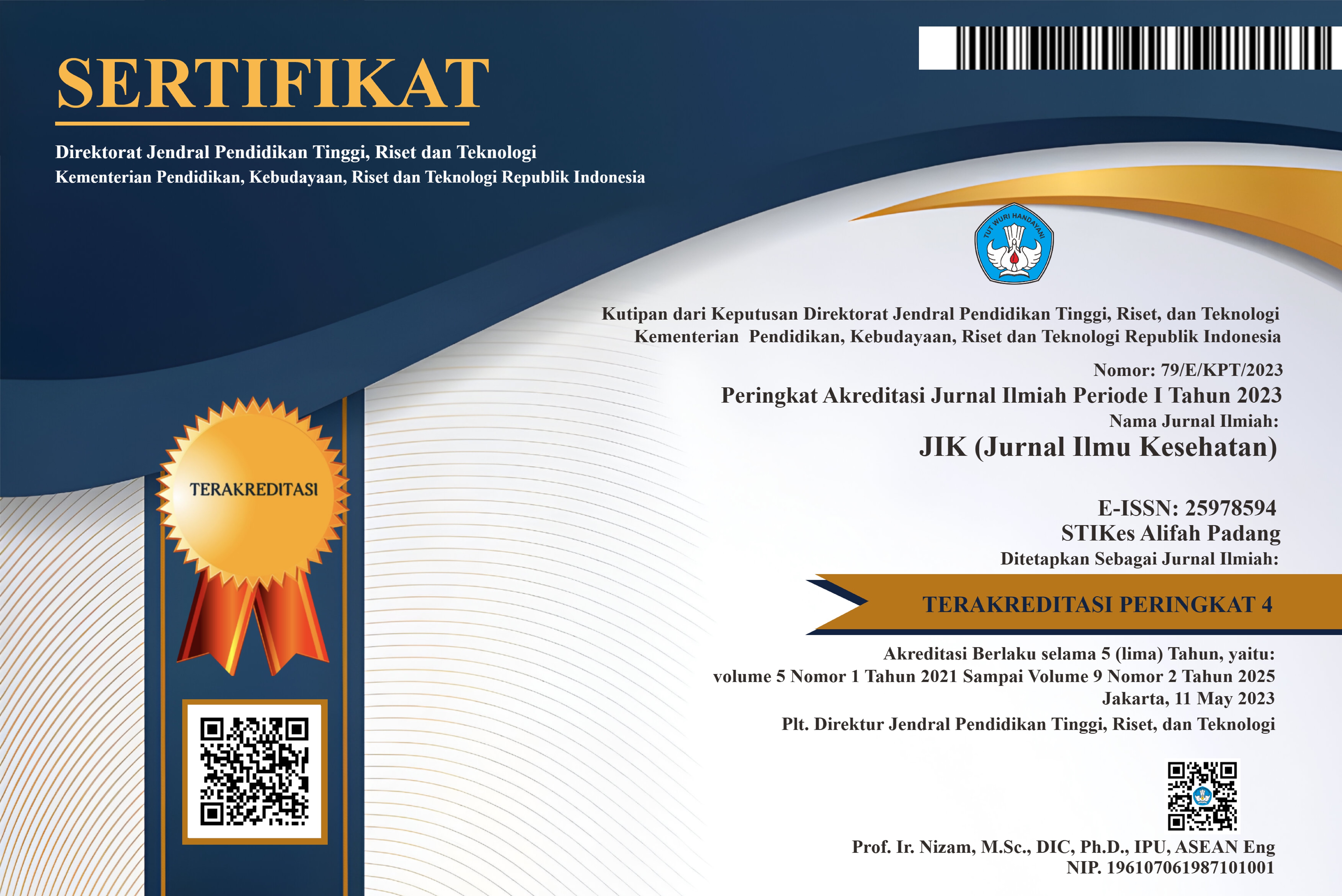Meta-Analisis Risiko Hipertensi dengan Penyakit Stroke di Asia
Abstract
Salah satu penyakit kardiovaskular yang menjadi penyakit paling mematikan adalah penyakit stroke. Global Burden of Disease Study 2017 mengestimasikan bahwa stroke yang menempati urutan kedua sebagai penyebab kematian pada tahun 2016 dan akan tetap berada diposisi yang sama pada tahun 2040. Hipertensi sebagai faktor risiko stroke juga diestimasikan akan mengalami peningkatan dimana diestimasikan jumlah orang dewasa dengan hipertensi akan meningkat sebesar 60% pada 2025. Penelitian ini menggunakan metode systematic review dan meta-analisis untuk melihat risiko hipertensi dengan penyakit stroke di Asia. Analisis lebih lanjut berdasarkan subtipe stroke juga dilakukan. Pencarian literatur dilakukan pada database PubMed, EBSCO dan Google Scholar. Tes Q dilakukan untuk menentukan heterogenitas studi yang dimasukkan. Funnel Plot, uji Regresi Egger dan metode Trim and Fill digunakan untuk mengidentifikasi bias publikasi dan dengan transformasi model antara Fixed Effect Model dan Random Effect Model untuk analisis sensitivitas. Hasil meta-analisis data menunjukkan bahwa hipertensi mempengaruhi kejadian stroke dengan Pooled OR 95% CI 5,9 (4,50-7,74). Funnel plot dan juga hasil dari Egger’s test pada hasil meta-analisis risiko hipertensi dengan penyakit stroke memberikan hasil adanya bias publikasi dengan kesimpulan 5 (lima) artikel missing. Bias publikasi ini diasumsikan terjadi karena kurangnya database, tidak adanya pencarian manual yang dilakukan untuk menjaring artikel-artikel dengan hasil yang tidak signifikan. Selain itu, artikel-artikel relevan yang masih dalam bentuk ‘grey literature’ seperti conference proceeding, dissertation, thesis and technical report tidak disertakan dalam analisis, beberapa artikel relevan lainnya ada yang tidak bisa diakses dan seringkali memuat data yang terbatas atau tidak lengkap.
Keywords
Full Text:
PDFReferences
Anwar, R. (2005). Meta-analisis. Bandung. Fakultas Universitas Padjajaran.
Bandasak, R., Narksawat, K., Tangkanakul, C., Chinvarun, Y., & Siri, S. (2011). Association between hypertension and stroke among young Thai adults in Bangkok, Thailand. Southeast Asian Journal of Tropical Medicineand Public Health, 42(5), 1241.
Burke, T. A., & Venketasubramanian, R. N. (2006). The epidemiology of stroke in the East Asian region: a literature-based review. International Journal of Stroke, 1(4), 208-215.
Chen, X., Zhou, L., Zhang, Y., Yi, D., Liu, L., Rao, W., ... & Yi, D. (2014). Risk factors of stroke in Western and Asian countries: a systematic review and meta-analysis of prospective cohort studies. BMC public health, 14(1), 1-13.
El-Hajj, M., Salameh, P., Rachidi, S., Al-Hajje, A., & Hosseini, H. (2019). Cigarette and waterpipe smoking are associated with the risk of stroke in Lebanon. Journal of epidemiology and global health, 9(1), 62.
El-Hajj, M., Salameh, P., Rachidi, S., Al-Hajje, A., Lahoud, N., & Hosseini, H. (2017). Stroke risk factors: a hospital-based case-control study in Lebanon. JR Soc Med, 8(6), 1-10.
Feigin, V. L., Wiebers, D. O., Nikitin, Y. P., O’Fallon, W. M., & Whisnant, J. P. (1998). Risk factors for ischemic stroke in a Russian community: a population-based case-control study. Stroke, 29(1), 34-39.
Gu, D., Kelly, T. N., Wu, X., Chen, J., Duan, X., Huang, J. F., ... & He, J. (2008). Blood pressure and risk of cardiovascular disease in Chinese men and women. American journal of hypertension, 21(3), 265-272.
Ismail, K. H., Al Tawil, N. G., & Al-Hadithi, T. S. (2010). Risk Factors for Stroke in Erbil City: A Case-Control Stud. Zanco Journal of Medical Sciences (Zanco J Med Sci), 14(1 Special), 14-19.
Kannel, W. B., & McGee, D. L. (1979). Diabetes and cardiovascular disease: the Framingham study. Jama, 241(19), 2035-2038.
Kearney, P. M., Whelton, M., Reynolds, K., Muntner, P., Whelton, P. K., & He, J. (2005). Global burden of hypertension: analysis of worldwide data. The lancet, 365(9455), 217-223.
Khodabandehlou, M., Mansournia, M. A., Mehrpour, M., & Naieni, K. H. (2016). Risk factors associated with ischemic stroke: A case-control study. Journal of Biostatistics and Epidemiology, 2(3), 111-117.
Kisjanto, J., Bonneux, L., Prihartono, J., Ranakusuma, T. A. S., & Grobbee, D. E. (2005). Risk factors for stroke among urbanised Indonesian women of reproductive age: a hospital-based case-control study. Cerebrovascular diseases, 19(1), 18-22.
Mehndiratta, M. M., Khan, M., Mehndiratta, P., & Wasay, M. (2014). Stroke in Asia: geographical variations and temporal trends. Journal of Neurology, Neurosurgery & Psychiatry, 85(12), 1308-1312.
O'donnell, M. J., Xavier, D., Liu, L., Zhang, H., Chin, S. L., Rao-Melacini, P., ... & Yusuf, S. (2010). Risk factors for ischaemic and intracerebral haemorrhagic stroke in 22 countries (the INTERSTROKE study): a case-control study. The Lancet, 376(9735), 112-123.
Asirvatham, A. R., & Marwan, M. Z. (2014). Stroke in Saudi Arabia: a review of the recent literature. Pan African Medical Journal, 17(1).
Shah, S. M. A., Shah, S. M. S., Khan, S., Rehman, S. U., Khan, Z. A., & Ahmed, W. (2013). “Addressing the impact of stroke risk factors in a case control study in tertiary care hospitals”: a case control study in Tertiary Care Hospitals of Peshawar, Khyber Phukhtoonkhwa (KPK) Pakistan. BMC research notes, 6(1), 1-10.
Sorganvi, V., Kulkarni, M. S., Kadeli, D., & Atharga, S. (2014). Risk Factors for Stroke: A Case Control Study.
Stroup, D. F., Berlin, J. A., Morton, S. C., Olkin, I., Williamson, G. D., Rennie, D., ... & Thacker, S. B. (2000). Meta-analysis of observational studies in epidemiology: a proposal for reporting. Jama, 283(15), 2008-2012.
Telman, G., Sprecher, E., Namestnikov, O., & Kouperberg, E. (2010). Comparison of risk factors and work‐up in young and middle‐aged patients with TIA and ischaemic stroke. European journal of neurology, 17(4), 567-571.
Tuomilehto, J., Rastenytė, D., Jousilahti, P., Sarti, C., & Vartiainen, E. (1996). Diabetes mellitus as a risk factor for death from stroke: prospective study of the middle-aged Finnish population. Stroke, 27(2), 210-215.
WHO. (2018). Global Health Estimates Summary Tables : Projection of Death by Cause, Age and Sex, GHE_DthGlobal_Proj_2015_2030, Editor. 2013.
WHO. (2018).Noncommunicable Disease : Country Profile 2018.
WHO. (2018). Noncommnicable Disease : Key Facts. 2018 1 Juni 2018; Available from: https://www.who.int/news-room/fact-sheets/detail/noncommunicable-diseases.
Zhang, X. F., Attia, J., D’Este, C., & Yu, X. H. (2004). Prevalence and magnitude of classical risk factors for stroke in a cohort of 5092 Chinese steelworkers over 13.5 years of follow-up. Stroke, 35(5), 1052-1056.
DOI: http://dx.doi.org/10.33757/jik.v6i2.539
Refbacks
- There are currently no refbacks.
Copyright (c) 2022 JIK JURNAL ILMU KESEHATAN

This work is licensed under a Creative Commons Attribution 4.0 International License.
E-ISSN : 2597-8594 (Online) P-ISSN : 2580-930X (Print)
Publish by Universitas Alifah Padang
Jl. Khatib Sulaiman No 52 B Kota Padang. Telp 0751-7059849. Fax 0751-7059849. Website: www.alifah.ac.id
Email : jik@alifah.ac.id













